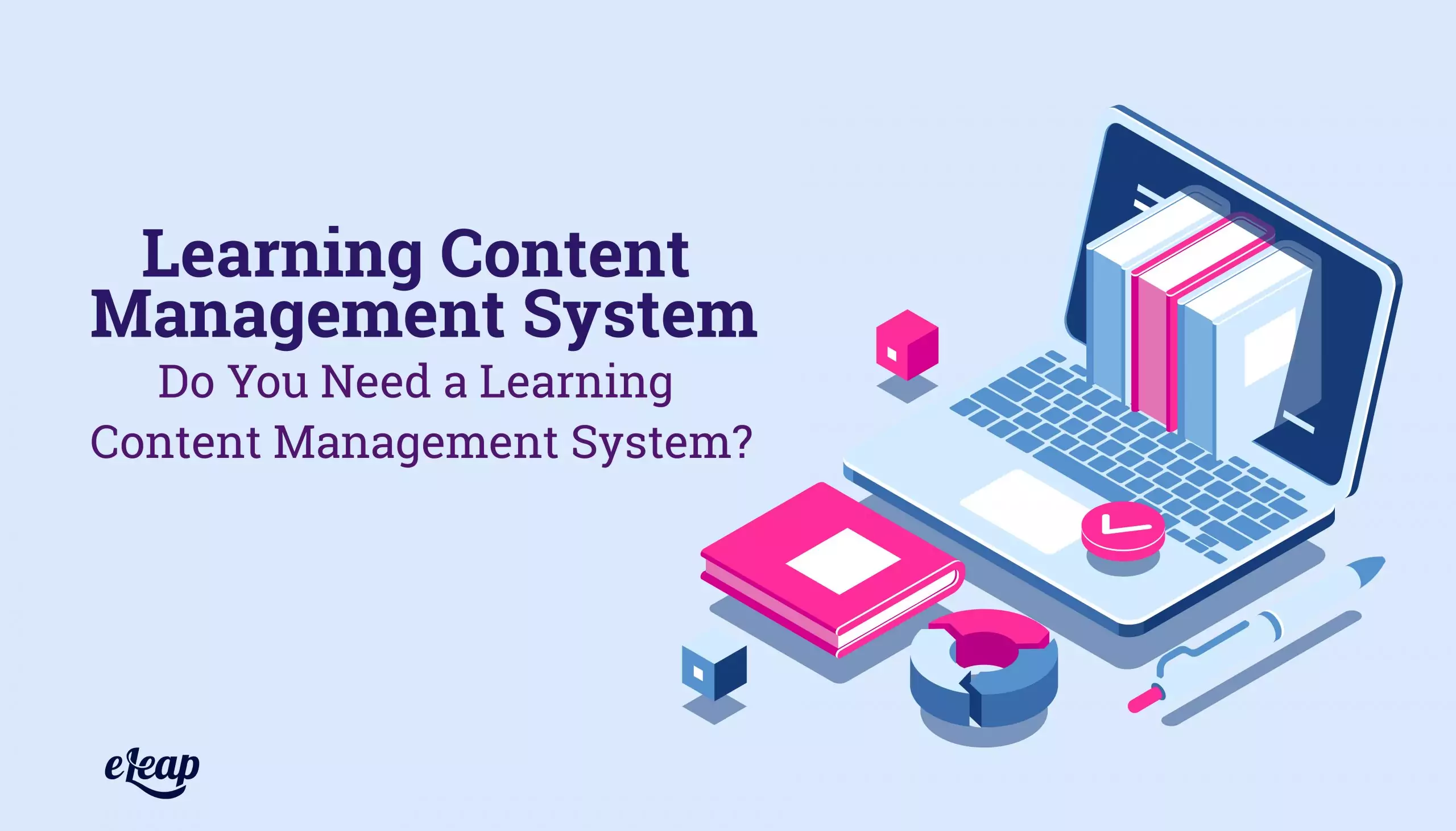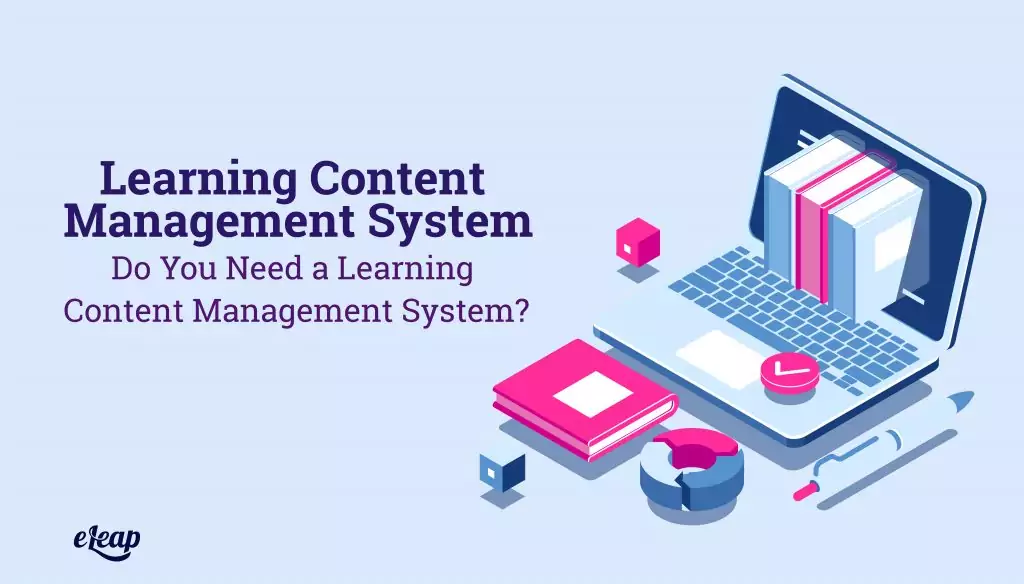Learning Content Management System
Do You Need a Learning Content Management System?

It can be pretty confusing when you’re first starting to look into software systems that can help you manage your company’s training and learning programs. Perhaps the biggest point of confusion comes from trying to figure out the difference between a learning management system (LMS) and a learning content management system (LCMS).

How Does a Learning Content Management System Differ from an LMS?
The simplest way to distinguish the two from each other is this: A learning management system helps you manage the activity of learning while a learning content management system helps you manage the creation and organization of the content that will be incorporated into your LMS. The end-users are very different. For the LMS, the end-users are the learners while for the LCMS the end-users are the people who create the learning content.
The confusion between these two different systems is totally understandable. If you Google the phrase “most popular learning content management system”, most of what you see on the first page of results is for learning management systems as opposed to the more specific learning content management system.
Many of the more established learning management systems have tried to incorporate and meet the needs of both learning management and learning content management. The big question is whether these platforms are as successful in both as you need them to be. A platform that started as a learning content management system but has evolved to include many LMS functions is probably going to lack some of the more robust features you’d want to see in your LMS. And the converse will often be true as well – an LMS that adds in LCMS features will often be somewhat lacking on the LCMS side of the equation.
Features to Look for in a Learning Content Management System
To help you make an informed decision, you need to know some of the key features to look for in these systems. We’ll start with LCMS features and then touch on LMS features. Within an LCMS, some of the things you need to consider include the following:
Content Creation
The entire point of an LCMS is, well, to create and manage content for your learners. That means you need to pay attention to the content creation aspect, particularly in terms of what sorts of files the system will accept. Do you need to create content in a specific file type? Does the system support multiple file types? Some of the types your system should support include:
- SCORM
- Audio
- Video
- Images (JPG, PNG, etc.)
- Text-based
- Word doc
- Excel spreadsheet
- PowerPoint presentations
Why does it matter if you can add all of these file types? Simply put, it speaks to your ability to create, manage, and deliver content that works for different types of learners, although they will access it through the LMS side of things, rather than through the LMS.
Branding Content
You must be able to create a branded experience for your learners, and that begins on the LCMS side of things. With the right system, you’ll be able to add your logo, set corporate colors, and more. You’ll also be able to design, create, and manage content that supports your brand’s ethics and culture.
Branded content supports the learner experience, shows that your organization is committed to delivering a superior experience and that you’re invested in your learners’ success. Using generic material, such as that supplied through an existing LMS, doesn’t help you reach those goals.
Creating Assessment Items
You must be able to track and measure the progress of learners through the LMS, but you also need to assess the amount of information they’re retaining. Quizzes and tests provide the ability to do just that. The right LCMS will let you quickly add quizzes, tests, surveys, and other assessment tools to the content while ensuring that those tools align with the content you create and tie into your brand.
Content Monetization
If you’ll be creating custom training content, you can turn that into another revenue stream. By monetizing your content and selling it through an eCommerce portal, you ensure that employees can learn while also boosting profitability. Also, you can further establish your brand as an authority within the industry, build your reputation, and even become a leader in industry-related training! Make sure that your LCMS includes built-in eCommerce capabilities, though.
Your LMS
We’ve touched on the LCMS side of things, but what about the LMS? Ideally, you’ll find an option that allows you to easily incorporate branded learning materials. It should also help you keep learners engaged with invitations, reminders, and the ability to provide feedback. It should also help you add in gamified content, deliver robust reporting capabilities to track courses, lessons, and path completion, and make it simple to manage users, roles, and teams within the system.
What about a Unified LCMS/LMS?
Choosing a system that serves as both your LMS and your LCMS certainly sounds like a convenient way to go, especially if you know how much time and effort it takes to do a really thorough exploration and selection process. If you decide to go this route, pay particular attention to which came first in the platform’s development – the LMS or the LCMS features. Once you know that, then you can home in on the more recently added aspect to make sure it is going to meet your needs.
eLeaP Can Fit Your Needs
Whether you’re shopping for a learning content management system or a learning management system, check out eLeaP to see if we’re the right choice for your company by trying it out now for free. Get in touch today and we’ll explain the features, benefits, and capabilities, as well as how we can grow with your needs. Call 1-877-624-7226 or email help@eleapsoftware.com for additional information.
Free Resources – Additional information?